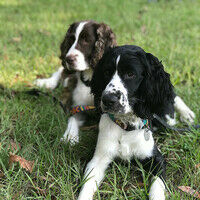Lots of posts here referring to some other source like a youtube interview. Let's bring it back home here and talk about ourselves and what we do - not refer to what others do and say.
I was watching a Hallmark film last night with my wife and it occurred to me that the composers of music for films on that channel seem to use string pizzicato a whole bunch. Now as we know, a pizzicato is a type of string articulation where the strings are plugged with a finger (or fingers).
1. So when is pizzicato as the primary sound (the melody and not an accompanying sound) most appropriate for cues in your score. I tend to think of a pizz melody, typically a very small limited number of pizz notes, for reinforcement of some comedic or perhaps to emphasize the unknown (though sometimes I prefer tremolo articulations). What do you use pizz for in your cues?
2. At what point does something for you get to the point of 'overuse'? When do you feel that despite pizz being appropriate, you have used it too much and it is beginning to distract the viewers? What do you do instead of pizz - do you use detache bowing or perhaps staccato bowing perhaps with a bit of accent?
3. Do you reserve pizz for just your strings? In other words, while pizz does not make sense for horns or woodwinds, have you found another way to emphasize those pizz situations with non-strings. Have you tried using certain pitched or unpitched percussion as a substitute for a string pizz? For example, have you tried using a bassoon staccato'd? or perhaps short marimba notes?
So this post is about what you use pizz for and what have you used as a substitute for a pizz?



Good questions Joel! I like to use pizz in cellos and double bass as well as a melody when the music is quite bare or if a texture needs to be quite light. Personally I try not to use it too much so overuse isn't a problem, but if it is, like you say in point 3 I double with piano/marimba, and also find other ways to add variety in the score in the surrounding elements which makes the pizz less prominent
I love Pizzicato, and I think its fun to have a thread focussing on tracks which use it effectively. Using it briefly as Flourishing orchestration at the beginning of a music cue, is typical, but as an integral part of the music, it finds new life.
The following musical compositions have inspired me.
" Late for Work~ Gremlins "
Star Wars, The Empire Strikes Back, Episode 5 "Lukes Nocturnal Visitor" &
Spanglish ~ Hans Zimmer~Bus Stop.
Great examples of of using pizzicato, as an integral part of your score.
As I am new to this arena, I look forward to reading more, from all the wonderful composers at Stage 32.
@Joel I'm not a musician, would be cool to hear examples of these notes. Music/sound is underestimated by many early film makers (including me) as a main component to success of film.
1 person likes this
Debbie, any of the compositions Gaynor mentioned will show you what pizzicato sounds like. It's when you play a string instrument by plucking the strings with your fingers instead of using a bow.
You can hear it from 8 seconds in the Late For Work cue Gaynor mentioned here: https://www.youtube.com/watch?v=Dq3GHyKqXHM
And see an orchestra in action doing pizz over here! https://www.youtube.com/watch?v=3CAXpuPqfv0
I like using Pizzicato. It very versatile across genres not just comedic or lite works. I love using it in ambient or horror pieces as well.